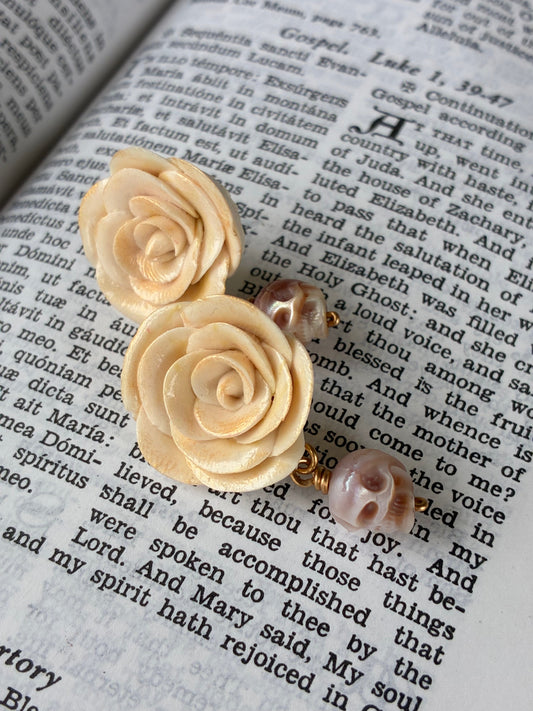
🦋 Drawn to the Flame: What Moths Teach Us About Death (and Why They’re Way Cooler Than Skulls)
Skulls get all the glory in the memento mori world. They’re bold, bony, and unmistakably dead. But if you’re looking for something more mysterious—more fluttery, more poetic—may I introduce you to...the moth?
Yes, the moth. The creature that flings itself toward flame, dances in darkness, and wears death on its back like a badge of honor.
Let’s talk about why moths deserve a seat at the memento mori table.
Moths vs. Skulls: A Tale of Two Symbols
Skulls are the classic icon of mortality. They’re blunt instruments of truth: you will die, and here’s your face without the fluff. In Western art, skulls dominate vanitas paintings, mourning rings, and tomb carvings. They’re static, stark, and sobering.
Moths, on the other hand, are movement. They’re transformation. They’re the soul in flight. While skulls say “you are dust,” moths whisper “you are becoming.”
Take the Death's Head moth, for example, a real insect with a skull-shaped marking on its thorax. In folklore, it’s been seen as an omen of death, a banshee in disguise, or even a messenger from the other side. But unlike a skull, the moth moves. It seeks light. It reminds us that death isn’t just an end, it’s a passage.
Drawn to the Flame
There’s something wildly romantic about a moth’s obsession with light. It doesn’t just admire the flame...it dives into it. And isn’t that a little like us? Drawn to beauty, to meaning, to transcendence, even if it burns the effigy of what we once were?
In this way, moths embody the spiritual tension of memento mori: the ache to live fully, knowing it will end. Which light will you choose to follow? God's? Or the artificial one that beckons you to stay in the material world at all costs?

God 🤝Moths
“They that dwell in houses of clay, whose foundation is in the dust, shall be consumed as by the moth.”
This verse paints human fragility with eerie precision. Our bodies like clay, our fate as fleeting as a moth’s touch.
“Behold, all of them shall be worn away as a garment: the moth shall eat them up.”
Here, the moth becomes a quiet destroyer—not with violence, but with slow, inevitable unraveling of our own construction. It’s a metaphor for how worldly power and pride decay when measured against eternity.
“Lay not up to yourselves treasures on earth: where the rust and moth consume, and where thieves break through and steal. But lay up to yourselves treasures in heaven…”
Matthew 6:19–20 (Douay-Rheims)
Jesus uses the moth to warn against misplaced priorities. Earthly treasures are vulnerable. Moths nibble at garments, just as time erodes what we cling to. The call is clear: invest in the eternal.
Why Choose the Moth?
If your jewelry, art, or storytelling leans toward the mystical, the moth is your muse. It’s less about fear, more about fascination. Less about bones, more about becoming.
So next time you reach for a skull to say “remember death,” consider the moth instead.
And isn’t that more fun?
Memento Mori: "Requiem" Drops October 3rd








